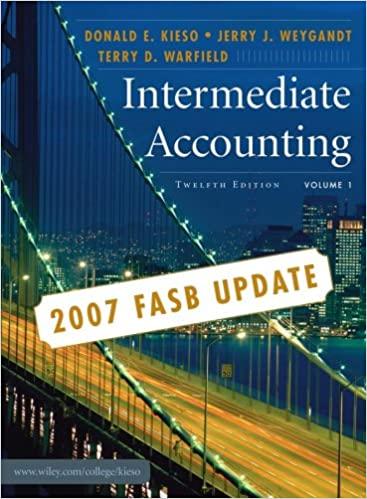Question
Question: 13-67 This case will enable you to practice conducting planning and substantive analytical proced... (4 bookmarks) 13-67 This case will enable you to practice
Question: 13-67 This case will enable you to practice conducting planning and substantive analytical proced... (4 bookmarks) 13-67 This case will enable you to practice conducting planning and substantive analytical procedures for accounts in the acquisition and payment cycle. When analyzing the financial data, you may assume that the 2015 information is unaudited, while prior-year data are audited. As you complete this case, consider the following features of and trends in the pharmaceutical industry and for PharmaCorp specifically: After a long period of industry dominance by companies in the United States, the United Kingdom, and Europe, these companies are facing increasing competition from companies domiciled in emerging economies, such as Brazil, India, and China. There exists significant uncertainty in the market because of recent regulation covering health-care and government payouts for certain procedures and related pharmaceuticals. Health-care policy makers and the government are increasingly mandating what physicians can prescribe to patients. Health-care policy makers and the government are increasingly focusing on prevention regimes rather than treatment regimes, thereby leading to shifts in the demand for various pharmaceuticals. The global pharmaceutical market is anticipated to grow by 57% in 2016 compared with a 45% growth rate in 2015, according to a leading industry analyst publication. Beginning in 2014, PharmaCorp initiated and executed a significant company-wide cost reduction initiative aimed at improving manufacturing efficiency, cutting back on research and development expenses, and eliminating unnecessary corporate overhead. PharmaCorps policies for extending credit to customers have remained stable over the last three years. PharmaCorps credit granting policies are considered stringent within the industry, and analysts have sometimes criticized the company for this, contending that such policies have hindered the companys revenue growth relative to industry peers. Two of PharmaCorps popular pharmaceuticals, Selebrax and Vyvox, came off patent during the fourth quarter of FYE 2015. These pharmaceuticals now face competition in the generic drug portion of the overall industry market. Information specific to the PharmaCorps Debt Activities Long-term debt balances (in the millions) for 2015 (unaudited) and 2014 (audited) are $31,036 and $34,926, respectively. The primary financing activity related to debt was net repayments of just over $1,500,000. Approximately $2,500,000 of long-term debt was reclassified as current in 2015. The average interest rate on the long-term debt (based on the high and low rates of PharmaCorps debt instruments) is 5.34% Interest expense in 2014 (audited) was approximately $2,000,000. Part I: Planning Analytical Procedures a Step 1: Identify Suitable Analytical Procedures. Your audit senior has suggested that the following ratio (on an overall financial statement level) will be used for planning analytical procedures related to debt activities at PharmaCorp: Estimate interest expense (related to long-term debt) based on average long-term debt interest rates and average long-term debt outstanding. As part of Step 1, identify any other relevant relationships or trend analyses that would be useful to consider as part of planning analytics. Explain your reasoning. b Step 2: Evaluate Reliability of Data Used to Develop Expectations. The audit team has determined that the data you will be using to develop expectations in relation to long-term interest expense is reliable. Indicate the factors that the audit team likely considered in making that determination. c Step 3: Develop Expectation. Complete Step 3 of planning analytical procedures by developing an expectation for interest expense for long-term debt. Even before you develop a point estimate, what is the nature of the change of the interest expense account that you expect (from the prior year)? Using only the information provided here, what is your point estimate of interest expense? d Step 4 and Step 5: Define and Identify Significant Unexpected Differences. Refer to the guidance in Chapter 7on performance materiality, tolerable misstatement, and clearly trivial amounts. Apply those materiality guidelines to Step 4 of planning analytical procedures to define what is meant by a significant difference. Explain your reasoning. Also comment on qualitative materiality considerations in this context. Now that you have determined what amount of difference would be considered significant, indicate whether there was a significant unexpected difference, assuming that the client recorded $1,800,000 of interest expense related to long-term debt. e Step 6 and Step 7: Investigate Significant Unexpected Differences and Ensure Proper Documentation.Complete Step 6 of planning analytical procedures by describing how your results will affect your substantive audit procedures. Explain your reasoning. To complete Step 7, describe what information should be included in the auditors workpapers. Part II: Substantive Analytical Procedures f As you talk with your audit senior, you realize that your estimate during planning was not very precise because it was based on data that were highly aggregated. While this approach would be appropriate for planning analytics, it is likely not appropriate for substantive analytics. How could you improve the precision of your estimate so that it would be precise enough to constitute evidence as a substantive analytical procedure? g Access the PharmaCorp Excel file at the text web site. Refer to the worksheet labeled PharmaCorp Long Term Debt. Use that information to develop a more precise estimate for interest expense for long-term debt. Given the estimate that you developed, what is your conclusion regarding the clients asserted amount of interest expense for long-term debt?
Step by Step Solution
There are 3 Steps involved in it
Step: 1

Get Instant Access to Expert-Tailored Solutions
See step-by-step solutions with expert insights and AI powered tools for academic success
Step: 2

Step: 3

Ace Your Homework with AI
Get the answers you need in no time with our AI-driven, step-by-step assistance
Get Started


